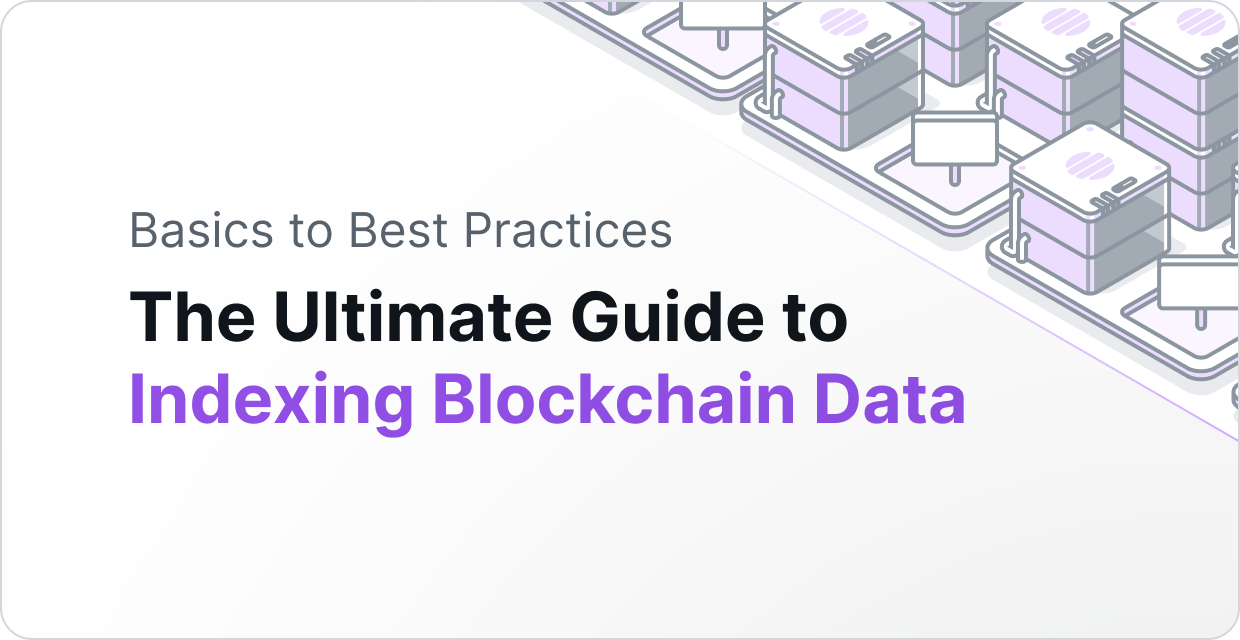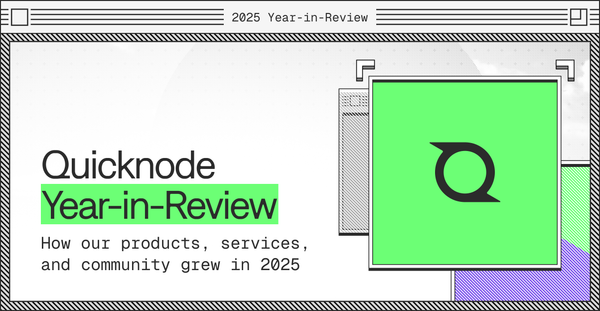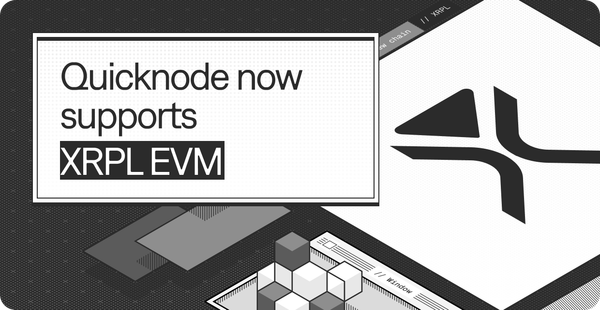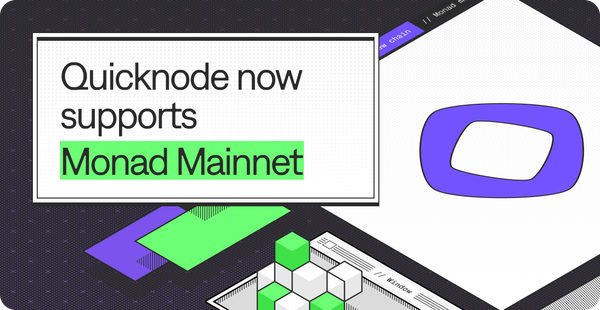The Ultimate Guide to Indexing Blockchain Data: Basics to Best Practices
Discover how blockchain data indexing transforms raw blockchain information into organized, easily accessible datasets, enhancing the performance of decentralized applications.

Blockchain data is more than just a record, it is the vehicle of value transfer in decentralized networks. From capturing financial interactions to updating the state changes, data blocks build the blockchain network.
However, this blockchain data is not exactly ready for use out of the box. The volume, variety, and velocity of this data are overwhelming and turn the blocks into a barricade.
Enter blockchain data indexing: they turn vast and raw databases into an organized library for developers and users to derive insights from and act upon.
In this blog, we’ll understand in-depth blockchain data indexing, why it matters, and how QuickNode can help access and leverage that.
What is Blockchain Data Indexing?
Blockchain data indexing involves the creation of a structured database that allows for efficient querying and retrieval of data from a blockchain. It is crucial for powering responsive and scalable applications that are built on top of blockchain data like DeFi platforms, NFT marketplaces, and blockchain explorers.
Traditionally, blockchain data is stored in a linear and immutable manner, which is necessary for maintaining security and integrity but hinders data retrieval.
Instead of scanning the entire blockchain for specific data, indexed data provides direct access paths, significantly reducing query times and computational overhead.
Apart from this, blockchain indexing also offers:
1. Improved scalability: By offloading query processing from the blockchain nodes to the indexed database, it reduces the load on the network, enhancing scalability.
2. Data integrity and auditability: Indexed data can be cross-referenced with blockchain data, ensuring data and transactional integrity.
3. Data enrichment: Indexed data allows the transformation of raw blockchain data into enriched datasets, including aggregation and calculation of metrics.
Workhorses of Blockchain Data Indexing
Blockchain data indexing relies on multiple interconnected components to work together to make indexed data available and efficiently serve queries.
Let’s take a look at the components and processes involved in blockchain data indexing:
Blockchain nodes
At the foundation of data indexing are the blockchain nodes, which come in two primary types: full nodes and light nodes.
- Full nodes store a complete copy of the blockchain, including all transaction data.
- Light nodes store only block headers and rely on full nodes for complete transaction data.
This distinction allows for a balance between network integrity and efficiency and both types are required for comprehensive indexing.
Data parsers
The raw data from these nodes is processed by various parsers:
- Transaction parsers extract detailed information from individual transactions,
- Block parsers handle block-level data, and
- Smart contract parsers interpret data from contract executions.
These parsers form the bridge between raw blockchain data and structured, indexable information.
Databases
To store and manage this parsed data, blockchain indexing systems employ a variety of databases.
- Relational databases using SQL provide structured data management,
- NoSQL databases offer flexibility and scalability, while
- Graph databases specialize in storing and querying graph structures, making them ideal for analyzing relationships between blockchain entities.
While databases provide the foundation for data storage, indexing engines are the mechanisms that organize data.
Indexing engines
Indexing engines are the core of the data organization process and there are various types of indexes, including
- Transaction indexes for quick retrieval of transaction details,
- Address indexes for tracking account activity,
- Block indexes for validating historical transactions, and
- Event indexes for monitoring smart contract activity.
Query interfaces
These interfaces enable developers and users to efficiently retrieve and analyze blockchain data:
- APIs or Application programming interfaces allow developers to interact programmatically with the indexed data, automating data retrieval & analysis.
- GraphQL is a query language for APIs that provides a more flexible and efficient way to query blockchain data.
- Dashboards allow users to interact with and analyze blockchain data through graphical representations and user-friendly controls.
Each interface comes with its own benefits and limitations. So, developers need to pick and choose the type of query interface that is relevant to their needs.
Why Blockchain Data Indexing Matters?
Blockchain data indexing is essential for various blockchain-based applications, enabling fast, complex queries and driving innovation.
Let’s explore why indexing matters for different use cases.
Decentralized Finance (DeFi) Applications
DeFi applications rely on real-time data for transactions, lending, borrowing, and trading. Without indexing, accessing this data would be slow and unreliable, affecting the user experience and the efficiency of the platform.
Indexing allows DeFi apps to:
- Instantly display user balances and transaction histories
- Provide real-time market data for trading decisions
- Calculate complex metrics like annual percentage yields (APY) on the fly
NFT platforms and marketplaces
Non-fungible tokens or NFT platforms and marketplaces require robust indexing to manage the vast amount of metadata associated with NFTs.
This metadata includes ownership, transaction history, and attributes.
Indexing enables NFT platforms to:
- Quickly load galleries of thousands of NFTs
- Provide instant search results based on various attributes (artist, price, rarity)
- Track ownership history and provenance of digital assets
- Calculate floor prices and other market metrics in real-time
Blockchain Analytics and Monitoring Tools
Blockchain data analytics and monitoring tools depend on comprehensive and timely data to provide valuable insights into blockchain activities.
Indexing makes it possible to:
- Monitor network health and detect anomalies in real-time
- Trace transaction flows to identify potential fraud or money laundering
- Generate comprehensive reports on blockchain activity, uptime, usage statistics, and trends
- Provide insights for regulatory compliance and auditing
Hybrid dApps Combining On-Chain and Off-Chain Data
Hybrid dApps that combine on-chain and off-chain data need efficient data indexing to integrate and synchronize both data types seamlessly.
Indexing enables:
- Quickly correlate on-chain events with off-chain data sources
- Provide personalized user experiences by combining blockchain data with user preferences
- Implement complex business logic that spans both blockchain and traditional systems
- Offer real-world asset tokenization with up-to-date, accurate information
Best Practices to Maintain Blockchain Data Integrity
Maintaining blockchain data integrity is crucial for building reliable and efficient dApps. Let's explore certain best practices that ensure your indexed blockchain data remains accurate, consistent, and performant.
Maintaining blockchain data integrity is crucial for building reliable and efficient dApps. Let's explore certain best practices that ensure your indexed blockchain data remains accurate, consistent, and performant.
Designing Efficient Indexing Schemas
`Create indexing schemas that track important data points like transaction IDs and timestamps. Minimize redundancy and use unique identifiers to keep your data structure optimized and easy to access.
Optimizing Data Retrieval and Query Performance
Enhance query speed with smart indexing strategies and caching. Break down large datasets into smaller segments and streamline queries to ensure they run efficiently and return only the necessary data.
Ensuring Data Integrity and Consistency
Ensure data integrity by implementing robust error handling, using atomic transactions, and employing data validation mechanisms. Regularly audit your data to spot and fix discrepancies, keeping your data consistent and reliable.
Regular Maintenance and Updates of Indexes
Regularly check and reorganize indexes to keep them running smoothly. Update your indexing strategies as your data grows and automate maintenance tasks to maintain consistency and reduce manual work.
Access Rich Blockchain Data With QuickNode Streams
QuickNode Streams is a service that makes it easy to get real-time data from blockchain networks. By eliminating complex ETL pipelines and ensuring guaranteed data delivery, Streams saves time and reduces costs.
Key Benefits
- Efficiency: Streams send data instantly in the correct order, so you get real-time updates without waiting.
- Reliability: It handles errors automatically and guarantees that the data you receive is accurate and complete, even if there are network issues.
- User-Friendly: The service is easy to set up and use, with a simple interface that doesn’t require extensive technical knowledge.
Rather than manually setting up all the infrastructure and resources needed to index blockchain data, developers and teams can hit QuickNode up. All the complexities are abstracted behind a simple dashboard and workflow. This also encourages more developers to try out web3 as they have a reliable and plug-and-play component.
Frequently Asked Questions (FAQs)
1. How do I set up QuickNode’s Streams for my blockchain application?
Setting up QuickNode’s Streams is straightforward.
Sign up on QuickNode, create a new Stream instance through the dashboard, configure your data sources and destinations, and start receiving real-time blockchain data with just a few clicks. The user-friendly interface and comprehensive documentation guide you through each step.
2. How can I improve the performance of my blockchain queries?
To improve blockchain query performance, use indexing to create direct access paths to frequently queried data.
Implement caching mechanisms to store commonly accessed data temporarily. Break down large datasets into smaller, more manageable segments, and ensure your queries are optimized to avoid unnecessary complexity.
3. How can I ensure my indexing system stays synchronized with the latest blockchain state?
Implement a robust block confirmation strategy, waiting for a certain number of confirmations before considering a block final. Automate maintenance tasks to reduce manual workload and ensure consistency, and periodically back up your indexed data to prevent data loss.

About QuickNode
QuickNode is building infrastructure to support the future of Web3. Since 2017, we've worked with hundreds of developers and companies, helping scale dApps and providing high-performance access to 40+ blockchains. Subscribe to our newsletter for more content like this, and stay in the loop with what's happening in web3!





